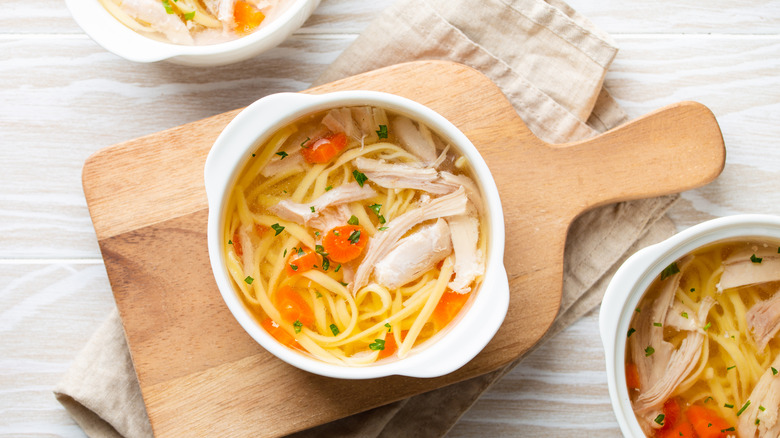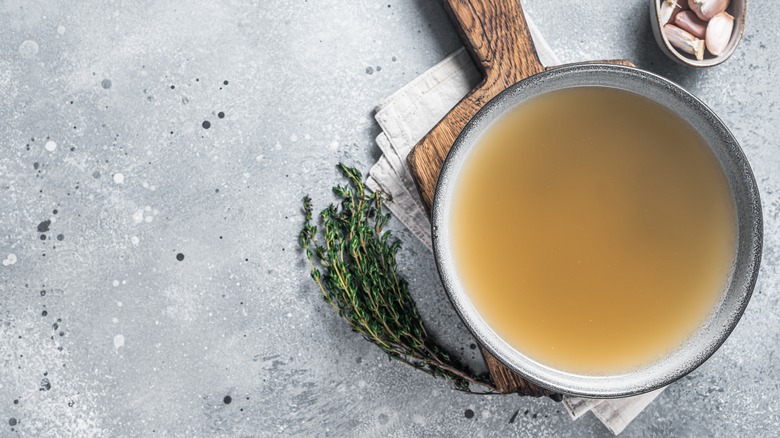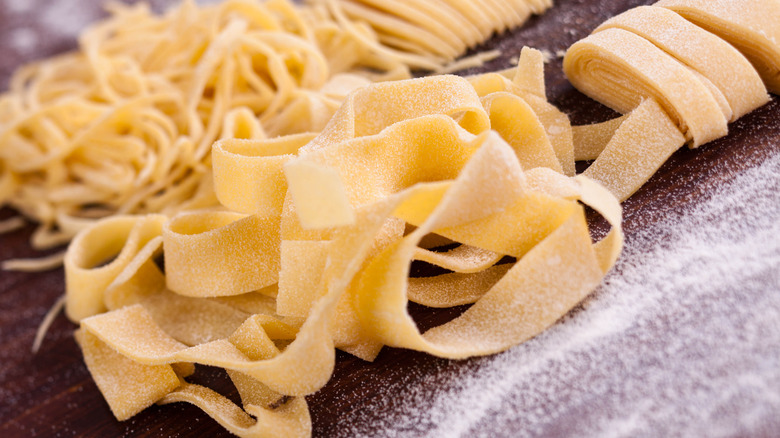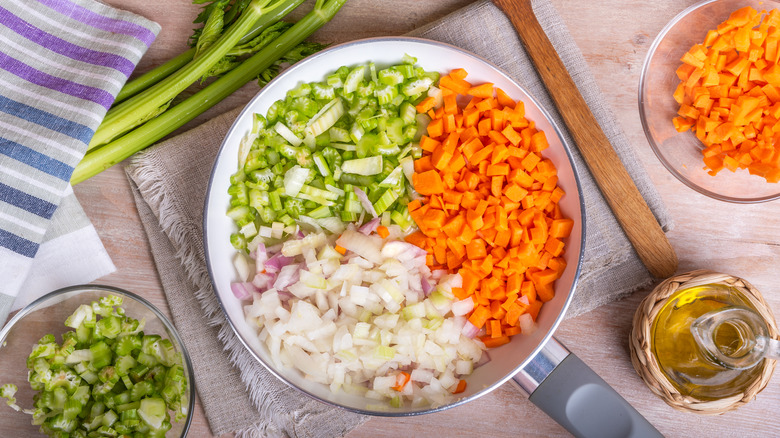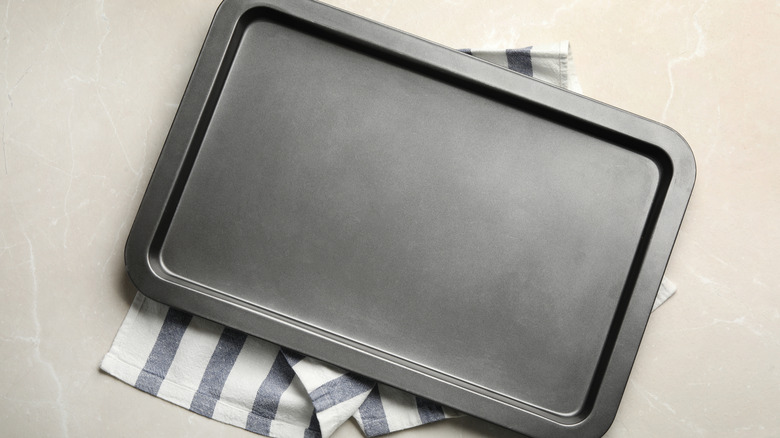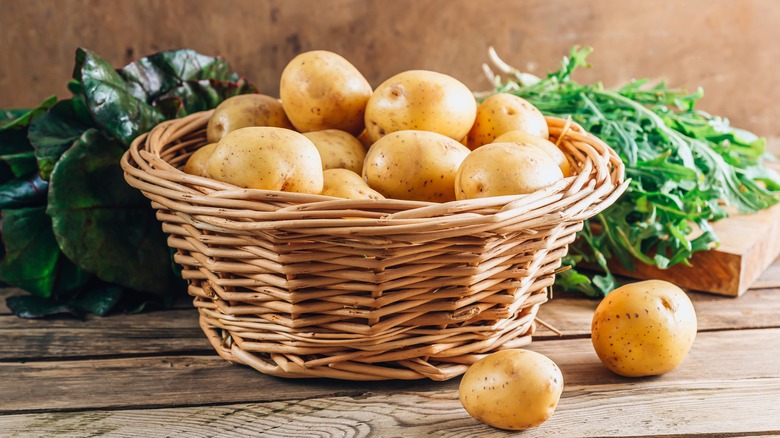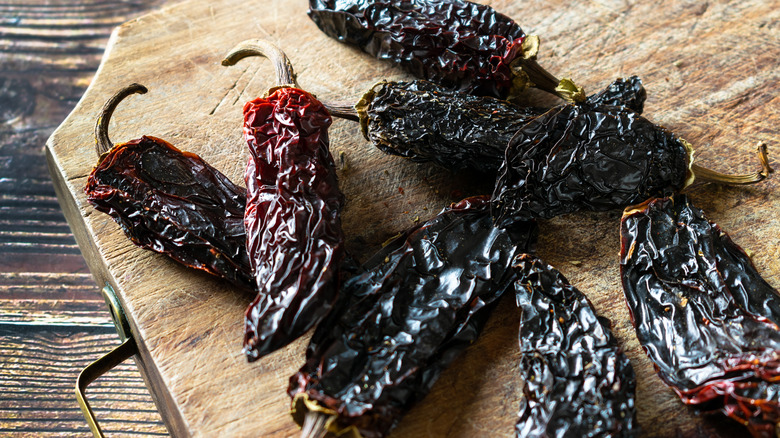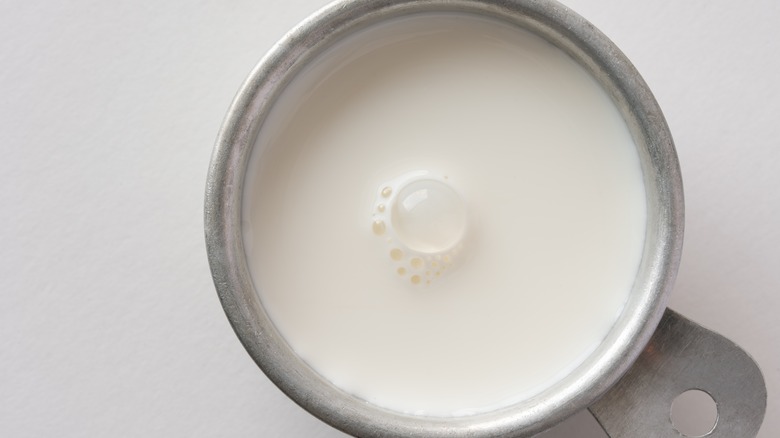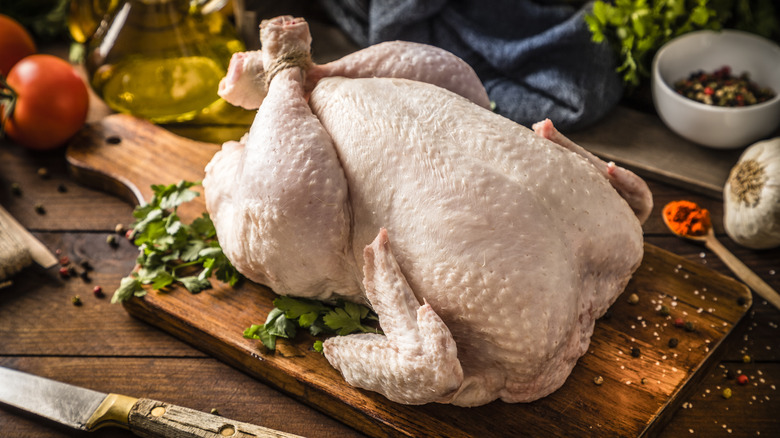14 Mistakes Everyone Makes With Chicken Noodle Soup
Chicken noodle soup is a timeless comfort dish that warms the soul and satisfies the palate. It's the ideal seasonal staple to keep us healthy during cold seasons and to help us feel better when we succumb to some winter ailment. But just because it seems like such a simple, uncomplicated dish, that doesn't mean it is. Crafting the ultimate bowl of chicken noodle soup requires a delicate balance of flavors and textures, transforming humble ingredients into a culinary masterpiece.
At its core, the basics of a good chicken noodle soup involve a rich and flavorful broth. Simmering chicken broth creates a robust foundation for aromatic vegetables like onions, carrots, and celery, along with a medley of herbs and spices. The choice of noodles is equally crucial; whether opting for classic egg noodles or other varieties, they should complement the soup without overshadowing its essence.
However, even the most seasoned cooks encounter pitfalls in their pursuit of the perfect chicken noodle soup. Common missteps include overcooking the noodles — resulting in a mushy texture — or underseasoning the broth, leading to a lackluster taste. Achieving the right balance of salt, pepper, and additional herbs is essential, as is maintaining the integrity of the ingredients to ensure each spoonful is a harmonious blend of flavors. To that end, we've put together a list of pitfalls that could stand in your way, and explain how best to overcome them.
Only using white meat
White chicken meat seems to be the gold standard when making most chicken-based recipes, like chicken piccata or chicken cutlets. Texture is key to these meals, and a thick, meaty consistency ensures their success. But it's also true that white meat is a little less flavorful than dark meat. Those legs, thighs, and wings, where most of the dark meat resides, contain most of the flavor. Even so, many people make the mistake of neglecting to use dark meat for chicken soup, and that's a crying shame.
To remedy this oversight, replace your white meat with dark meat next time you make chicken soup. Or simply add dark meat with your white meat. The increased muscle and fat content will lend the soup a richer flavor while sparing your wallet from the expense of purchasing pricier white meat. Once you have your meat on hand, brown it in a pan before tossing it in the soup with the rest of the ingredients, then cook it through before removing it, shredding it, and returning it to the soup.
Winging it on the broth
The broth makes up a pretty big part of chicken noodle soup, even though it's not mentioned in the soup's title. Nonetheless, many people make the mistake of neglecting the broth, turning it into an afterthought rather than giving it the central role it deserves. In these cases, each spoonful of soup turns into a moment of mediocrity.
But never fear — this fate can be avoided by focusing your attention back on the broth and following a few key steps. One good way to create extra nutritious chicken noodle soup is to cut some of the stock with bone broth, which you can buy at the store or make at home by boiling the bone and connective tissues left over from roasted turkey. Or you can opt for the way David Chang adds more natural flavor to chicken noodle soup, which involves making your own stock at home by boiling a leftover rotisserie chicken that still has some meat left on its bones. Or if you're pressed for time and are using the boxed broth for your chicken noodle soup, you can always spruce up the broth with your own mirepoix of fresh onions, carrots, and celery.
Adding the noodles too soon
There is no chicken noodle soup without the noodles, which is why it's important to know when you should add the noodles to chicken noodle soup — and that's not too soon. When you take dried pasta out of the box, it tends to look indestructible. Sure, pasta can break apart pretty easily, but it's harder than nails, and doesn't seem to be in danger of simply disappearing.
Yet noodles only require some 10 minutes of cooking time, after which they start to become mushy. And we all know what happens to mush — over time it breaks down, eventually turning into an amorphous blob. This is not what you want happening to the noodles in your chicken soup, which is why we suggest that you only add them to the pot toward the end of the cooking time, with about 10 minutes to spare. This will give them enough time to soften, but it won't overcook them, meaning you'll still have those delicious noodles to sink your teeth into.
Leaving out the seasoning
When making chicken noodle soup, it's not enough to just throw together some broth, chicken, and noodles, and call it a day. Seasoning is just as important as everything else, as is the type of seasoning that is chosen. For instance, a dash of cinnamon in chicken noodle soup has never hurt anyone, and in fact, it probably helps. This spice — and its woody, earthy undertones — can add a hint of sweetness to your soup without the use of sugar.
Similarly, ginger is the secret ingredient to give chicken noodle soup a spicy kick while also providing a hint of sweetness. There are many ways to use it: You can grate fresh ginger into your pot early in the cooking process, which is the method that provides the most flavor impact, or you can sprinkle dried ginger powder into your sautéed aromatics. But if you want to emulate the decadent way Ina Garten overhauls classic chicken noodle soup, try using saffron. She adds a pinch of it to her soup to give it an extra boost of warmth. Just make sure to keep the amount small. Not only is saffron surprisingly expensive for spice, but using copious amounts will risk leaving a bitter taste in your mouth.
Forgetting the lemon juice
Lemons are an all-around magical ingredient, in that they manage to transform pretty much any dish — both sweet and savory — with just a few dashes of their juice or zest. Lemons can also be the ingredient that will change your chicken noodle soup, vastly improving it with lemon juice at the end of the cooking process. This small but impactful trick enhances the flavor of the soup and gives it a brighter taste profile.
But don't just wield your lemons willy-nilly. Use them strategically. Add ¼ cup of lemon juice to the soup to do the trick. Also make sure you carry out this step at the very end of cooking, after your soup is off the heat. If you put it in too early it's likely to cook too much, which would cancel out the brightness and actually lead to a concentrated bitterness. If you want to add a bit of lemon zest early in the cooking stage, this won't hurt the soup, as the zest doesn't break down as the juice does — but the best course of action for that delicious brightness is to stick with adding the lemon juice at the end.
Not paying attention to the base
A strong foundation is necessary to build anything of note, whether that be a skyscraper or a pot of chicken noodle soup. While we can't help you with constructing the former example, we can certainly give you a few pointers on building a good soup foundation. In particular, sofrito is an ingredient that upgrades chicken noodle soup. This blend of aromatics — typically including garlic, tomatoes, and fresh herbs — originated in Spain and comes in many variations. But each variety, whether it includes spicy peppers or sharp leeks, will help you elevate a regular chicken soup into something more extraordinary.
But paying attention to your soup base doesn't have to be complicated. In fact, you could even buy your base at the grocery store, saving you a lot of work. Store-bought mirepoix boosts homemade chicken noodle soup with ease. Mirepoix typically includes onions, carrots, and celery, and it can do a lot to build the flavor base in your chicken noodle soup. Because preparing mirepoix requires a lot of chopping, time, and fine motor skills, many people tend to skip it. We argue that you should buy it ready-made to save time, rather than skipping it altogether, since it is such a key building block.
Shying away from unconventional ingredients
One of the reasons why chicken noodle soup is so beloved is because it is comforting in its intense familiarity. It reminds us of childhood and of being cared for. But to think of this soup as merely a comfort dish would be keeping it from reaching its full potential. In fact, adding an unconventional ingredient might be just what your soup needs to rise to the next level. For instance, "Food 911" star Tyler Florence is known to add a turnip to his chicken noodle soup as a way to add a subtle pop of flavor.
Meanwhile, even just a teaspoon of fish sauce can go a long way toward giving your chicken noodle soup a hint of umami, thereby adding an additional layer of flavor without changing the overall taste all that much. Another oft-overlooked ingredient is the unexpected chicken part that makes soup delicious: chicken feet, a fairly common foodstuff in Asia and Mexico. But if you feel a little queasy at the thought of eating chicken feet, don't worry, you don't have to actually eat them if you don't want to. When you add them to your soup as it cooks, their concentrated chicken flavor and gelatinous composition will be imparted into the broth, giving your soup an extra boost. Once that's done, you can just remove the feet and put them in the compost heap.
Throwing in all the vegetables at once
If you're a fan of adding plenty of vegetables to your chicken noodle soup, you're in good company. Carrots, celery, and even leafy greens can find pride of place there, especially when you're using the dish to recover from a cold and need all the nutrients you can get. However, adding vegetables also involves a slight complication to the overall recipe. If you were sticking to just carrots, celery, and onions, it would be fine to put them all in the pot at the beginning — but any veggies in addition to that might need to be added later.
This is because different vegetables take different amounts of time to cook. A crunchy carrot takes a lot longer to soften than a tender zucchini. Thus, putting the zucchini in at the same time as the carrot can lead to an overcooked or even disintegrated squash. The trick is to add your vegetables to your soup at different times of the cooking process, according to their composition.
Using a sheet pan
If you're a person with common sense, which you probably are, you may already know that using a sheet pan to make soup — any kind of soup — is a harebrained idea. Yet because this is a thing someone actually tried on social media, it bears saying that it would be a mistake to try to make chicken noodle soup in a sheet pan.
Although the "recipe" in question, posted on TikTok, appears to be a tongue-in-cheek parody of cooking videos, it does raise an interesting question: Is it worthwhile to ever cook chicken noodle soup in the oven? The answer is probably no. Quite apart from the near-impossibility of using a shallow sheet pan to contain large volumes of sloshing liquid, if you did manage to get it into the oven without spilling it, you'd be dealing with a thin substance that would bubble over onto your oven's base and partly evaporate, causing your soup to concentrate into something that is more like a stew. And while there's nothing wrong with stew, there are easier ways to make it than this.
Neglecting the starch
Chicken noodle is one of the thinner soups — it's not a creamy chowder or a smooth tomato soup. But that doesn't mean it should be completely devoid of creaminess, and we believe that this element can come in the form of starch. Yet many home chefs often neglect this part, instead relying too much on the broth.
We're here to tell you that this is a mistake. We suggest adding starchy potatoes to your soup, the type that will break down in the broth and infuse the whole thing with its natural thickening properties. Good options for this are russet or Idaho potatoes. If no fresh potatoes are available, or if you want to use up some leftovers, you can achieve a similarly creamy effect by adding mashed potatoes, potato flakes, or hash browns — all of which will break down and spread throughout your soup. Alternatively, if you want to have your cake and eat it too, you can populate your chicken noodle soup with durum wheat noodles instead. Their high gluten content will ensure that the durum's starch will break down into your soup as you cook the noodles, even while they maintain their shape and chewiness.
Fearing the spice factor
While a classic chicken noodle soup is a thing for the ages, this dish can also incorporate spicy elements better than most. While adding some chili flakes to your aromatic sauté can certainly work, we suggest that you give chicken noodle soup a kick with chipotle peppers in adobo sauce. This method is tasty, and easy, and can be done with homemade soup or as a way to spruce up a canned version.
For the homemade version, marinate your chipotle peppers in adobo sauce before chopping them up and adding them to your carrot, onion, and celery sauté for the broth. If you're working with soup from a can, just pop it into a pot and immediately add the chipotle peppers. If you really like the flavor, go all out and pour the rest of the adobo sauce from the chipotle jar into your soup — it would be a shame to let it go to waste. Alternatively, you can think ahead and use that sauce to marinate your chicken before you throw it into the soup.
Being overly concerned with tradition
One of the many appeals of chicken noodle soup is its tradition as a comfort food. Often simple, uncomplicated, and familiar, it can be a refuge when life gets too crazy out in the real world. Yet none of these benefits will go away if you want to doctor it up a bit. In other words, it doesn't pay to be overly concerned with tradition, as you might miss out on a wonderful new ingredient.
One such ingredient is heavy cream, and if you forget about adding it until after the cooking process, that's no problem at all. Simply whisk some cornstarch into the cream as a binding agent, and pour the mixture into your soup after it has been cooked and taken off the heat — you want your soup to be hot but not boiling, or the cream could curdle. This nontraditional ingredient remains thoroughly within the realm of comfort food, so this creamy addition will elevate your chicken noodle soup without causing it to stray from its familiar function.
Accepting canned soup as it is
Canned soup might not be the most sophisticated culinary item known to humanity, but with the right upgrades, it can be transformed into a worthy meal. Indeed, we recommend always upgrading it somehow, as simply plopping a can of chicken noodle soup into your pot or microwave and heating it up usually isn't going to cut it.
Of course, you can always enhance a canned soup with a few simple herbs, or a dash of lemon juice for brightness. But it's particularly worthwhile to upgrade canned chicken noodle soup with whisked eggs, effectively turning your simple meal into an egg drop chicken noodle soup. To make this, just whisk some eggs in a bowl and pour them into your hot simmering soup. As you pour them, stir them in one direction, as if you were making poached eggs, until they're cooked through. Serve immediately.
Not using a whole chicken
Many people make chicken noodle soup with chicken breasts or pieces of dark meat, which they cook in the soup, shred, and then return to the pot. This is a common and effective way to make this type of soup, but there's also a way to go the whole hog, and that is to boil the entire chicken in your pot — skin, meat, bones, and all.
To get this right, start with the broth. You must make it at home from scratch with the whole chicken, which we recommend to be about 3 pounds in weight. But unlike with most homemade stocks, don't remove any of the meat from the chicken. Rather, keep it on the bird and simply simmer the whole thing in water — which will become the stock in the process — until it's cooked through. The collagen-rich skin from the chicken will add thickness and texture to your broth while the meat will intensify the flavor. Just make sure you simmer that chicken over a long period of time instead of boiling it quickly. This will ensure the meat remains tender, which is an important factor since you'll be using it in the actual soup later.
